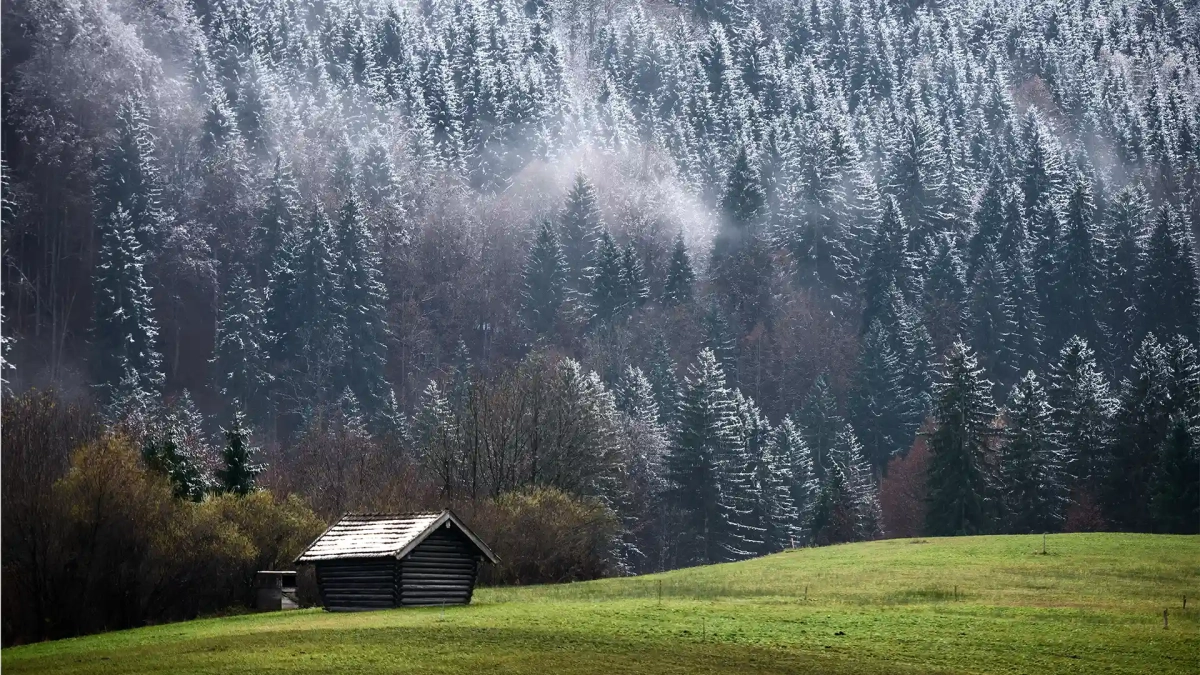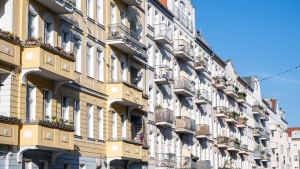Seasons in Germany: A Complete Guide to Weather, Traditions, and Activities
Germany is a country with a rich tapestry of landscapes, from the Alpine mountains in the south to the sweeping coastlines in the north. One of the best ways to experience the country’s diverse geography and culture is by understanding its four distinct seasons: spring, summer, autumn, and winter. Each season offers unique opportunities to explore different regions, enjoy traditional festivities, and experience a variety of outdoor and indoor activities. Here’s everything you need to know about the seasons in Germany.
1. Spring in Germany (March to May)
Spring in Germany is a time of renewal and vibrancy, as the country awakens from the long, cold winter months. Flowers begin to bloom, temperatures gradually rise, and people flock outdoors to enjoy the beautiful scenery.
Weather in Spring
- March: The month can still be quite chilly, especially in the mornings and evenings. Temperatures range from 5°C to 12°C.
- April: Known for its unpredictable weather, April can bring both sunshine and sudden rain showers. Temperatures range from 8°C to 15°C.
- May: The weather becomes more stable, with mild and pleasant temperatures ranging from 12°C to 20°C. This is a great time to enjoy the outdoors.
What to Wear: Layered clothing is essential in spring, as temperatures can fluctuate throughout the day. A light jacket, scarf, and waterproof shoes are recommended.
Spring Activities and Traditions
- Easter Celebrations: Easter is a significant holiday in Germany, marked by traditional events such as egg hunts, festive parades, and elaborate church services. Many towns host Easter markets, where you can buy handcrafted goods and enjoy local delicacies.
- Cherry Blossom Festivals: In cities like Bonn and Berlin, cherry blossom season is celebrated with festivals and picnics under the blooming trees. It’s a picturesque time to take photographs and stroll through parks.
- Hiking and Cycling: As the weather warms up, Germany’s numerous hiking and cycling trails come to life. The Black Forest and the Bavarian Alps are particularly popular destinations for outdoor enthusiasts.
Travel Tip: Spring is an ideal time to visit the Rhine Valley, where vineyards and castles make for a stunning backdrop. Wine tasting tours are popular, and the region’s mild weather is perfect for leisurely exploration.
2. Summer in Germany (June to August)
Summer is a vibrant season in Germany, characterized by long days, warm temperatures, and numerous outdoor festivals. Locals and tourists alike take advantage of the sunny weather to explore the country’s natural beauty, from lakes and rivers to mountains and beaches.
Weather in Summer
- June: Early summer can be quite pleasant, with temperatures ranging from 15°C to 25°C. Expect occasional rain showers.
- July: This is usually the hottest month, with temperatures reaching up to 30°C or higher in some regions. It’s perfect for water-based activities.
- August: The warm weather continues, but thunderstorms can become more frequent as summer begins to transition into autumn. Temperatures range from 18°C to 28°C.
What to Wear: Light, breathable clothing is recommended, along with a hat and sunglasses for sun protection. Comfortable walking shoes are a must, especially if you plan to explore cities or go hiking.
Summer Activities and Traditions
- Music Festivals: Germany hosts a variety of music festivals during the summer, including the famous Rock am Ring and Wacken Open Air. Classical music lovers can enjoy open-air concerts in cities like Berlin and Dresden.
- Beer Gardens: One of the best ways to experience German culture in the summer is by visiting a beer garden. These outdoor venues serve traditional German beer and hearty snacks like pretzels and sausages. Munich is particularly famous for its beer garden culture.
- Swimming and Water Sports: With plenty of lakes and rivers, Germany offers ample opportunities for swimming, paddleboarding, and kayaking. Popular spots include Lake Constance, the Baltic Sea coast, and the Spree River in Berlin.
- Castle Visits: Summer is a great time to explore Germany’s fairytale castles, such as Neuschwanstein Castle and Heidelberg Castle. The lush greenery and clear skies make for stunning views and excellent photo opportunities.
Travel Tip: Book accommodations and popular attractions in advance, as summer is peak tourist season. Consider exploring lesser-known regions like the Harz Mountains or the Moselle Valley to avoid crowds.
3. Autumn in Germany (September to November)
Autumn in Germany is a season of stunning natural beauty, with vibrant foliage painting the landscapes in hues of red, orange, and gold. It’s also a time for harvest festivals, wine celebrations, and cozy evenings spent enjoying hearty German cuisine.
Weather in Autumn
- September: Early autumn is often warm and pleasant, with temperatures ranging from 15°C to 22°C. It’s an excellent time for outdoor activities.
- October: The weather begins to cool down, and temperatures range from 10°C to 16°C. This month is known for its colorful foliage and crisp air.
- November: Late autumn can be quite chilly, with temperatures dropping to 5°C to 10°C. Rain becomes more frequent, and the days grow shorter.
What to Wear: Layered clothing is essential, along with a warm coat and waterproof footwear. Scarves and hats are useful for staying cozy as temperatures drop.
Autumn Activities and Traditions
- Oktoberfest: The world’s largest beer festival, Oktoberfest, takes place in Munich from late September to early October. It’s a lively event filled with traditional Bavarian music, food, and, of course, beer. If you can’t make it to Munich, many cities across Germany host their own versions of the festival.
- Wine Festivals: The autumn grape harvest is celebrated in wine regions like the Moselle Valley and the Palatinate. Visitors can enjoy wine tastings, vineyard tours, and lively parades.
- Hiking and Leaf Peeping: Autumn is the perfect season for hiking in Germany, as the forests are ablaze with fall colors. The Saxon Switzerland National Park and the Harz Mountains are particularly breathtaking in autumn.
- Pumpkin Festivals: Ludwigsburg hosts one of the largest pumpkin festivals in the world, featuring impressive pumpkin sculptures, delicious pumpkin dishes, and family-friendly activities.
Travel Tip: Autumn is a great time to visit Germany’s national parks and countryside. The mild weather and fewer tourists make for a more relaxed experience.
4. Winter in Germany (December to February)
Winter in Germany transforms the country into a magical wonderland, especially during the Christmas season. Snow blankets the landscapes in many regions, and Christmas markets bring warmth and cheer to cities and towns.
Weather in Winter
- December: The beginning of winter can be cold but festive, with temperatures ranging from 0°C to 5°C. Snowfall is common in the southern and eastern regions.
- January: This is typically the coldest month, with temperatures often dropping below freezing. In the Alps and higher elevations, snow is abundant.
- February: The weather remains cold, but days gradually start to become longer. Temperatures range from -5°C to 5°C, depending on the region.
What to Wear: Heavy winter coats, thermal layers, gloves, hats, and scarves are essential. Waterproof boots are recommended, especially if you plan to walk in snowy or slushy conditions.
Winter Activities and Traditions
- Christmas Markets: Germany is famous for its Christmas markets, which open in late November and run until Christmas Eve. Popular markets include the Nuremberg Christkindlesmarkt, the Dresden Striezelmarkt, and the Cologne Christmas Market. Enjoy mulled wine (Glühwein), gingerbread, and handmade crafts.
- Skiing and Snowboarding: The Bavarian Alps and the Black Forest are top destinations for winter sports enthusiasts. Ski resorts like Garmisch-Partenkirchen and Oberstdorf offer excellent slopes for all skill levels.
- Ice Skating: Many cities set up outdoor ice rinks during the winter months. Berlin’s Winter World at Potsdamer Platz and Munich’s ice rink at Karlsplatz are popular spots.
- New Year’s Eve Celebrations: Known as Silvester in Germany, New Year’s Eve is celebrated with fireworks, parties, and traditional foods like Berliner Pfannkuchen (jelly doughnuts). Berlin’s New Year’s Eve celebration at the Brandenburg Gate is one of the largest in Europe.
Travel Tip: If you’re planning to visit Germany during the Christmas season, book your accommodations early, as hotels near popular markets and ski resorts fill up quickly. Also, check weather conditions if you’re traveling to snowy regions.
Unique Seasonal Experiences in Germany
Germany’s diverse landscape and rich cultural traditions make each season special. Here are some unique experiences to consider:
- Spring: Visit the Keukenhof-inspired tulip fields in Lüneburg Heath or attend the Hanover Spring Festival, one of the largest spring fairs in Europe.
- Summer: Take a road trip along the Romantic Road, stopping at picturesque towns like Rothenburg ob der Tauber. Enjoy a boat cruise on the Rhine River, taking in the scenic vineyards and medieval castles.
- Autumn: Participate in a traditional lantern parade for St. Martin’s Day in early November, a beloved children’s event featuring songs, parades, and homemade lanterns.
- Winter: Experience a traditional German Christmas Eve dinner with dishes like roast goose and potato dumplings. Take a guided tour of the snow-covered Neuschwanstein Castle for a fairytale winter experience.
Best Places to Visit in Each Season
- Spring: The Moselle Valley for its blossoming vineyards and Bonn for the famous cherry blossom avenue.
- Summer: Lake Constance for swimming and sailing, or the island of Sylt for sunbathing and beach activities.
- Autumn: The Black Forest for hiking and breathtaking fall foliage, or the Palatinate Forest for wine tasting.
- Winter: The Harz Mountains for a snowy escape and the city of Dresden for its enchanting Striezelmarkt.
Germany’s four seasons offer something for everyone, whether you’re a nature lover, a history enthusiast, or a foodie. From the blooming flowers of spring and the lively festivals of summer to the colorful leaves of autumn and the cozy markets of winter, there’s never a wrong time to visit. Understanding the unique characteristics of each season will help you make the most of your time in this beautiful country.
Whether you’re hiking in the Alps, sipping mulled wine at a Christmas market, or enjoying a summer music festival, Germany’s seasonal offerings are sure to create unforgettable memories.
How informative was this article?
Click on a star to rate it!
We are sorry that this post was not useful for you!
Let us improve this post!
What is missing in the article?















